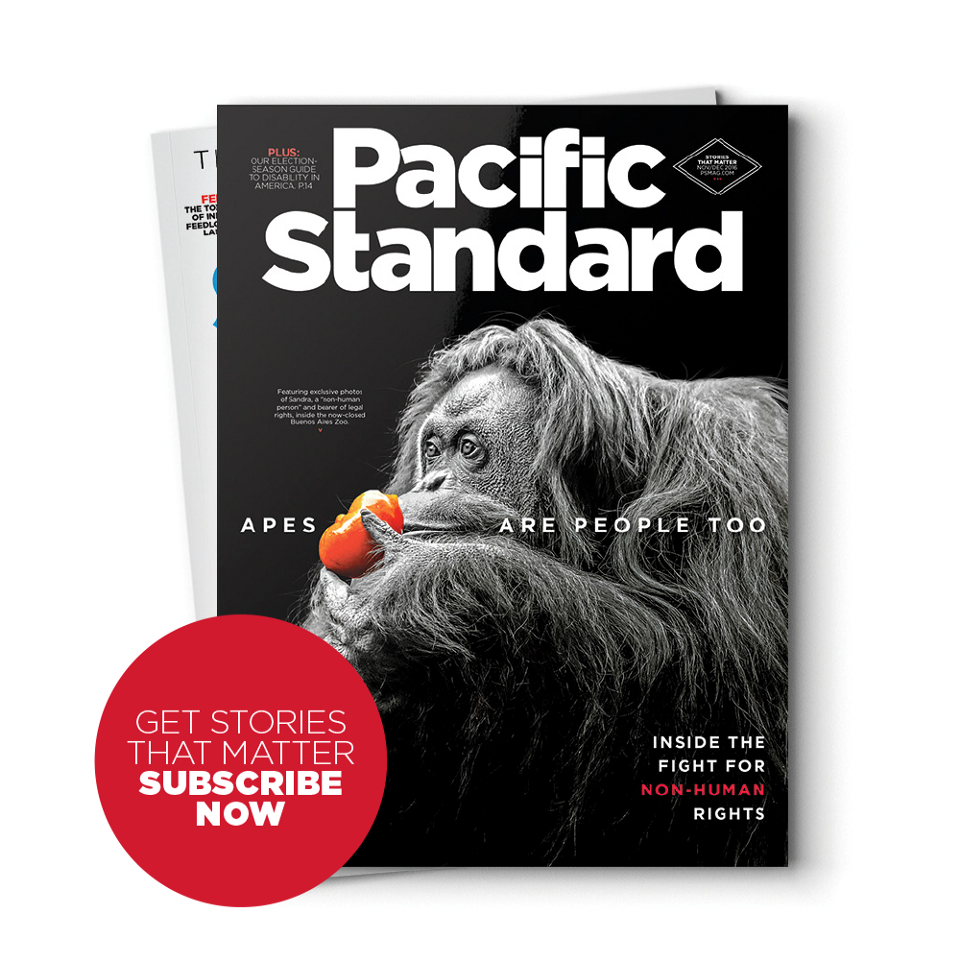In every print issue, we fix our gaze on an everyday photograph and chase down facts about details in the frame.
(Photo: Dustin Franz)
- Membershipin the Professional Rodeo Cowboys Association, which funds the highest-paying rodeos, peaked in 1999 at around 7,400, and dropped to just below 5,000 in 2014.
- Between 1981 and 2005, one study found the injury rate for rodeo cowboys was around 32 per 1,000 bull rides — just under the rate another study found for college football over a similar time period.
- During the Revolutionary War, “cowboys” were colonial traitors — British loyalists who lured George Washington’s soldiers into ambushes by ringing cowbells from the brush.
- Cowboys became heroic figures a hundred years later when young black, Mexican, Native American, and white European immigrant men drove millions of cattle from south Texas to Kansas railway stops, to help feed the Northeast’s exploding population.

A version of this story first appeared in the
of Pacific Standard.
.
- “It was riding at a dead run in the dark, with cut banks and prairie dog holes all around you, not knowing if the next jump would land you in a shallow grave,” wrote the England-born cowboy Edward “Teddy Blue” Abbott. Most cowboys quit after one journey.
- “Cowboy” became a term of derision in the first half of the 20th century, a taunt for young, marijuana-smoking “drugstore cowboys” loitering outside pharmacies, or urban men who adopted the Stetson-and-boots look.
- According to the folklorist Archie Green, Nashville country musicians like Waylon Jennings in the 1970s and Hollywood films like 1969’s Midnight Cowboy helped popularize the melancholic, outlaw panache of contemporary cowboy portrayals. Simultaneously, blue-jean sales exploded across Asia, Europe, and North America.
- In San Francisco, London, Seoul, and Istanbul, the anthropologists Sophie Woodward and Daniel Miller observed that between one- and two-thirds of passersby on crowded streets were clad in denim, suggesting that, at any given moment, about half the urbanized world is wearing this single textile.
- “Blue jeans are the most beautiful things since the gondola,” wrote the iconic fashion columnist Diana Vreeland.
- The PBS-broadcasted documentary China Blue profiled Jasmine, a 17-year-old denim-factory worker in China’s Guangdong Province, who worked 18-hour days and received six cents an hour to remove lint and snip loose threads from the seams of denim jeans to be sold by retailers like Walmart.
- Over a thousand years ago, Chinese alchemists experimenting with honey, sulfur, and potassium nitrate discovered that heating the concoction made it erupt into a bouquet of flames, creating the earliest known reworks.
- An average of seven people die in fireworks accidents in the United States every year. A Consumer Product Safety Commissionreport estimated that 9,600 rework-related injuries were treated in 2011; 65 percent took place within 30 days of July 4th.





